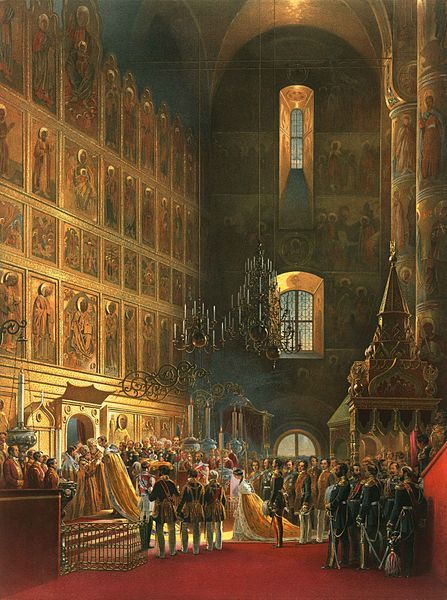Don't wanna be here? Send us removal request.
Photo
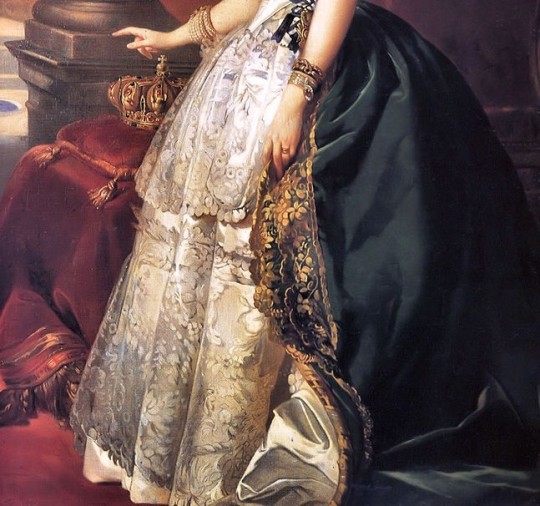
Franz Xaver Winterhalter, Portrait of the Empress Eugénie detail, 1853
483 notes
·
View notes
Photo
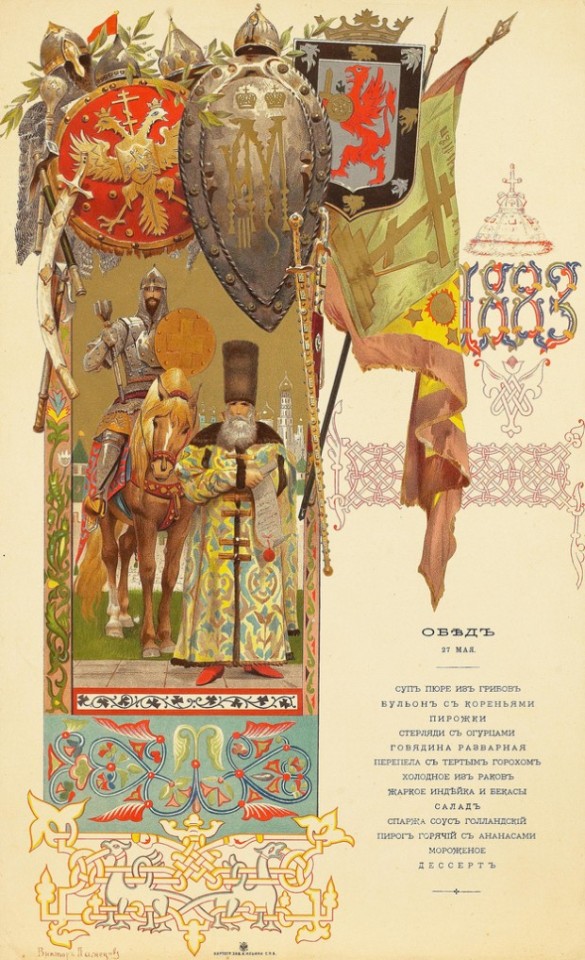

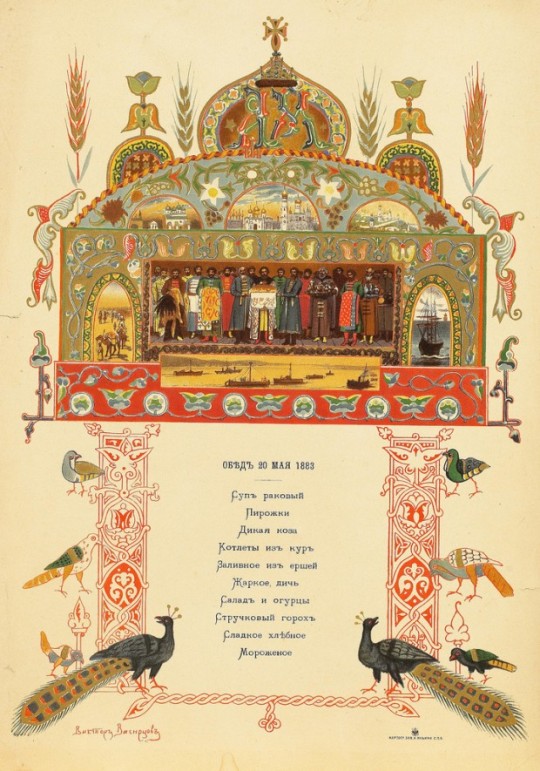
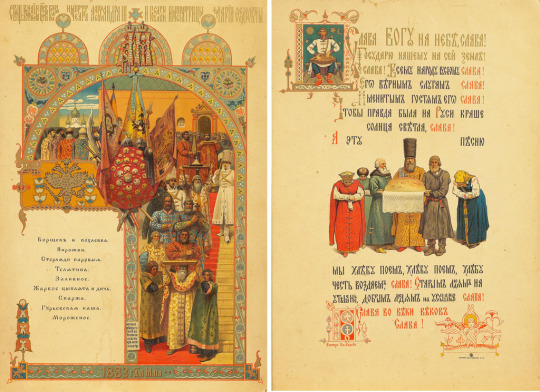
Dinner Menus for the Coronation of Tsar Alexander III, 1883
806 notes
·
View notes
Quote
“After mentioning Laurens’s immediate family, Hamilton concluded the letter on a playful note and asked his friend to procure him a wife from South Carolina. His specifications included youth, beauty - ‘I lay most stress upon a good shape’ - moderate intelligence, and, proving there is truth in jest, wealth. Hamilton insisted that his own characteristics be accurately described to the potential lover, and was careful to underline for emphasis ‘size’ and ‘body.’ ‘In drawing my picture,’ he instructed Laurens, ‘you will no doubt be civil to your friend; mind you do justice to the length of my nose and don’t forget that I…’ At this point, unfortunately, someone, presumably a Hamilton descendent, thoroughly marked through the remainder of the sentence and made it completely illegible. Yet the implication was clear then and now: a common double entendre of the period involved comparisons between the length of a man’s nose and the size of his penis; it was a running joke throughout Laurence Sterne’s Tristram Shandy, a work popular among devotees of sensibility. Obviously, and not surprisingly, the young officers share a propensity for bawdy humor. Ultimately, however, the passage is similar to much of Laurens’s surviving correspondence: it raises more questions than it answers.”
Gregory Massey, John Laurens and the American Revolution
Obviously just common bawdy humor, indeed. I always assumed that’s what straight men did when they got together, talk about their penis size. Thanks for clearing that up, Massey.
(via publius-esquire)
12 notes
·
View notes
Photo
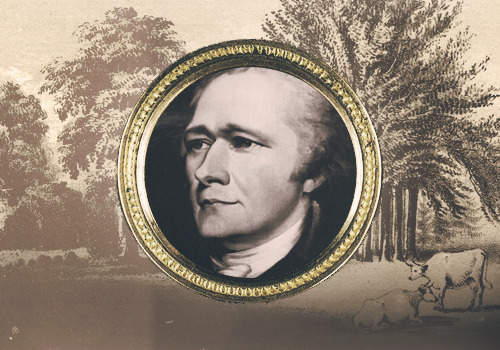
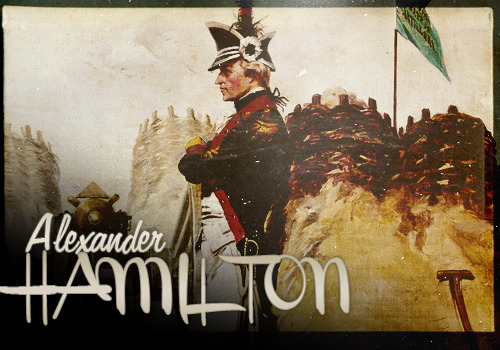
History Meme // Seven Men: Alexander Hamilton [4/7]
Alexander Hamilton (January 11, 1755 or 1757 – July 12, 1804) was a Founding Father of the United States, chief of staff to General Washington, one of the most influential interpreters and promoters of the Constitution, the founder of the nation’s financial system, and the founder of the first American political party. As Secretary of the Treasury, Hamilton was the primary author of the economic policies of the George Washington administration, especially the funding of the state debts by the Federal government, the establishment of a national bank, a system of tariffs, and friendly trade relations with Britain. He became the leader of the Federalist Party, created largely in support of his views, and was opposed by the Democratic-Republican Party, led by Thomas Jefferson and James Madison.
Hamilton resigned from office in 1795 and returned to the practice of law in New York. He kept his hand in politics and was a powerful influence on the cabinet of (1797–1801). Hamilton’s opposition to Adams’ re-election helped cause his defeat in the 1800 election. When in the same contest Thomas Jefferson and Aaron Burr tied for the presidency in the electoral college, Hamilton helped defeat Burr, whom he found unprincipled, and elect Jefferson despite philosophical differences. After failing to support Adams, the Federalist candidate, Hamilton lost some national prominence within the party. Vice President Burr later ran for governor in New York State, but Hamilton’s influence in his home state was strong enough to prevent a Burr victory. Taking offense at some of Hamilton’s comments, Burr challenged him to a duel and mortally wounded Hamilton, who died within days.
286 notes
·
View notes
Quote
“The Philadelphia Papers will tell you of a handsome stroke by [Henry] Lee on Powles Hook. Some folks in the Virginia line jealous of his glory had the folly to get him arrested. He has been tried and acquitted with the highest honor. Lee unfolds himself more and more to be an officer of great capacity, and if he had not a little spice of The Julius Caesar or Cromwell in him, he would be a very clever fellow.”
Alexander Hamilton to John Laurens, September 11, 1779
If only he would stop decapitating deserters, he’d be more popular.
(via publius-esquire)
27 notes
·
View notes
Photo
history meme | ten moments; symphony no. 7 played during the siege of leningrad (august 9, 1942)
The 872 day siege of Leningrad caused the greatest destruction and the largest loss of life ever known in a modern city. The siege is the most lethal in world history, and some historians speak of the siege operations in terms of genocide, as a “racially motivated starvation policy” that became an integral part of the unprecedented German war of extermination. On 9 August 1942, the Symphony No. 7 “Leningrad“ by Dmitri Shostakovich was performed by the Leningrad Radio Orchestra. The score had passed the German lines by air one night in March 1942. The concert was broadcast on loudspeakers placed throughout the city and also aimed towards the enemy lines. This was the date initially chosen by Hitler to celebrate the taking of Leningrad. {x}


1K notes
·
View notes
Photo


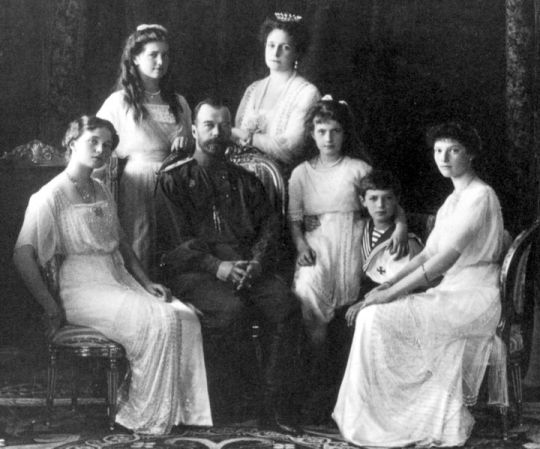
May 26th 1896: Tsar Nicholas II crowned
On this day in 1896 Nicholas Romanov was crowned Tsar of Russia. He became Tsar in November 1894 upon the death of his father Tsar Alexander III. His reign was marred by economic collapse, military failure in the Russo-Japanese War and the First World War, and bloody repression at home. Nicholas II abdicated on March 2nd 1917 after the February Revolution. His family were imprisoned, and soon after the Bolsheviks took power in the October Revolution, the Romanov family was executed.
280 notes
·
View notes
Photo


History Meme | [1/1] war: Russian Civil War
“No single man makes history. History cannot be seen, just as one cannot see grass growing. Wars and revolutions, kings and Robespierres, are history’s organic agents, its yeast. But revolutions are made by fanatical men of action with one-track mind, geniuses in their ability to confine themselves to a limited field. They overturn the old order in a few hours or days, the whole upheaval takes a few weeks or at most years, but the fanatical spirit that inspired the upheavals is worshiped for decades thereafter, for centuries.” -Doctor Zhivago by Boris Pasternak
36 notes
·
View notes
Photo
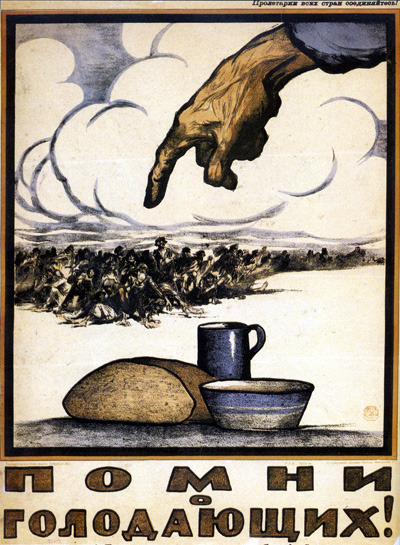



History meme (1/2) Natural Disasters - “Povolzhye Famine”
The Russian Famine of 1921, better known as the Povolzhye Famine. The severe famine in Bolshevik Russia begun in early spring 1921 and lasted through 1922. The famine was caused by soviet prodrazvyorstka and the disruption of agricultural production due to World War 1, The Russian Revolution, and The Russian Civil War.A drought in 1921 also contributed heavily. The famine mainly effected the Volga valley and killed an estimated 5 million people. There are many reported cases of cannibalism, including reports of mothers killing their own children, and several butcher shops being closed down for selling human meat.
Read more [x] [x]
15 notes
·
View notes
Photo
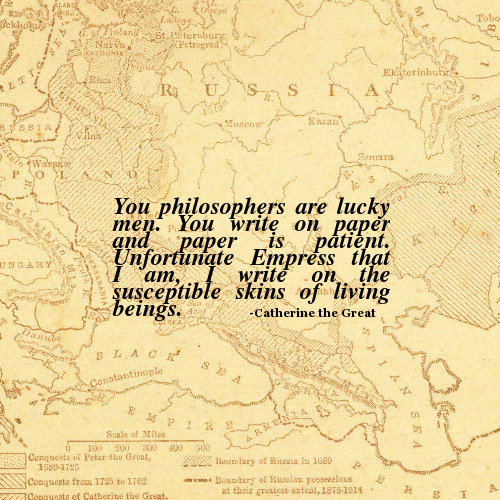

history meme | nine rulers; catherine the great, empress of russia (1729-1796)
Yekaterina Alexeevna or Catherine II, also known as Catherine the Great, was the most renowned and the longest-ruling female leader of Russia. She came to power following a coup d’état and the assassination of her husband, Peter III, at the end of the Seven Years’ War. Russia was revitalized under her reign, growing larger and stronger than ever and becoming recognized as one of the great powers of Europe. The period of Catherine the Great’s rule, the Catherinian Era, is often considered the Golden Age of the Russian Empire and the Russian nobility. A notable example of enlightened despot, a correspondent of Voltaire and an amateur opera librettist, Catherine presided over the age of the Russian Enlightenment, when the Smolny Institute, the first state-financed higher education institution for women in Europe, was established. {X}
7K notes
·
View notes
Photo

Princess Anastasia (aged 15) smoking with her father, Tsar Nicholas II, 1916
660 notes
·
View notes
Photo
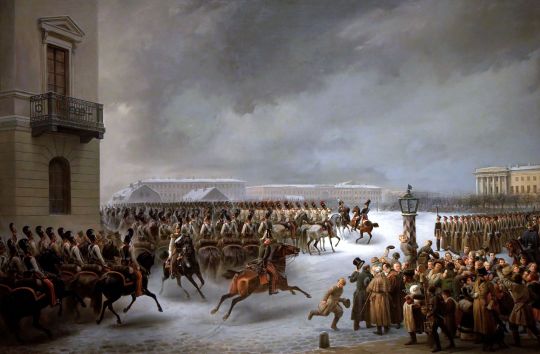
Vasily Timm - The Decembrist Revolt (1853)
The Decembrist revolt occurred in 1825. It was led by 3000 soldiers and officers of the Imperial Russian Army, who protested against the accession of Nicholas I to the throne of Russia. The main aim of the Decembrists was to abolish the monarchy and establish a temporary military administration that was to guide the country’s transition to a French-style democracy.
This uprising, which was suppressed by Nicholas I, took place in the Senate Square in Saint Petersburg. In 1925, to mark the centenary of the event, the square was renamed as Decembrist Square, but in 2008 it reverted to its original name.
63 notes
·
View notes
Photo
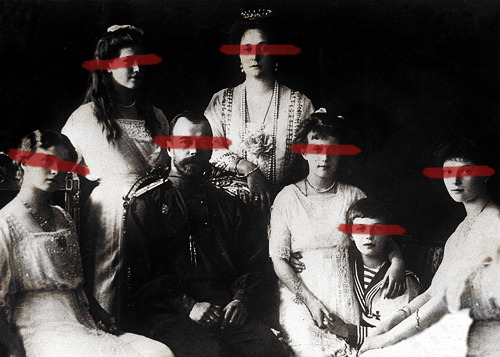
※ H I S T O R Y MEME » one/ten moments » execution of the Romanov family & household by the Bolsheviks
In March 1917, revolution broke out on the streets of Petrograd (now St. Petersburg) and Nicholas was forced to abdicate his throne later that month. That November, the radical socialist Bolsheviks, led by Vladimir Lenin, seized power in Russia from the provisional government, sued for peace with the Central Powers and set about establishing the world’s first communist state. Civil war broke out in Russia in June 1918, and in July the anti-Bolshevik “White” Russian forces advanced on Yekaterinburg, where Nicholas and his family were located, during a campaign against the Bolshevik forces. Local authorities were ordered to prevent a rescue of the Romanovs, and after a secret meeting of the Yekaterinburg Soviet, a death sentence was passed on the imperial family.
Late on the night of July 16, Nicholas, Alexandra, their five children and four servants were ordered to dress quickly and go down to the cellar of the house in which they were being held. There, the family and servants were arranged in two rows for a photograph they were told was being taken to quell rumors that they had escaped. Suddenly, a dozen armed men burst into the room and gunned down the imperial family in a hail of gunfire. Those who were still breathing when the smoked cleared were stabbed to death.
1K notes
·
View notes
Photo

※ H I S T O R Y MEME » one/four leaders » Vladimir Lenin
Vladimir Ilyich Lenin (22 April 1870 - 21 January 1924) was a Russian communist revolutionary, politician and political theorist. He served as the leader of the Russian SFSR from 1917, and then concurrently as Premier of the Soviet Union from 1922, until his death. Politically a Marxist, his theoretical contributions to Marxist thought are known as Leninism, which coupled with Marxian economic theory have collectively come to be known as Marxism-Leninism.
Born to a wealthy middle-class family in Simbirsk, Lenin gained an interest in revolutionary leftist politics following the execution of his brother in 1887. Briefly attending the Kazan State University, he was ejected for his involvement in anti-Tsarist protests, devoting the following years to gaining a law degree and to radical politics, becoming a Marxist. In 1893 he moved to St. Petersburg, becoming a senior figure within the League of Struggle for the Emancipation of the Working Class. Arrested for sedition and exiled to Siberia for three years, he married Nadezhda Krupskaya, and fled to Western Europe, living in Germany, England and Switzerland. Following the February Revolution of 1917, in which the Tsar was overthrown and a provisional government took power, he returned home.
As the leader of the Bolshevik faction of the Russian Social Democratic Labour Party, he took a senior role in orchestrating the October Revolution in 1917, which led to the overthrow of the Russian Provisional Government and the establishment of the Russian Socialist Federative Soviet Republic, the world’s first constitutionally socialist state. Immediately afterwards, Lenin proceeded to implement socialist reforms, including the transfer of estates and crown lands to workers’ soviets. Faced with the threat of German invasion, he argued that Russia should immediately sign a peace treaty - which led to Russia’s exit from the First World War. In 1921 Lenin proposed the New Economic Policy, a system of state capitalism that started the process of industrialisation and recovery from the Russian Civil War. In 1922, the Russian SFSR joined former territories of the Russian Empire in becoming the Soviet Union, with Lenin as its leader.
After his death, Marxism-Leninism developed into a variety of schools of thought, namely Stalinism, Trotskyism, and Maoism. Lenin remains a controversial and highly divisive world figure. Detractors have labelled him a dictator whose administration oversaw multiple human rights abuses, but supporters have countered this criticism citing the limitations on his power and have promoted him as a champion of the working class. He has had a significant influence on the international Communist movement and was one of the most influential figures of the 20th century.
30 notes
·
View notes
Photo


History Meme | [1/9] Kings & Queens: Tsarina Catherine the Great
Born a princess of minor German royalty, she was sent to Russia to marry Peter III, after which she quickly mastered the language and connected with the Russian people. She was believed to have participated in, or at least have been aware of, the coup d’était that resulted in the murder of her husband and her ascension to Empress Regent. As ruler, she embraced many Enlightenment philosophies and policies, introducing Nakaz (Instruction) which emphasized secular political institutions guided by legal parameters and denounced capital punishment and torture on the grounds that they violated individual rights. While she did not abolish serfdom due to political and social constraints, she did provide them with more, albeit severely limited, rights. During her reign she oversaw the defeat of the Pugachev Rebellion, which helped to solidify her newly acquired position, the First Russo-Turkish War and various conflicts with Turkey, and the partition of Poland, during which she placed her lover, Stanisław August Poniatowski, on the Polish throne. She was succeeded by her son, Paul I.
94 notes
·
View notes
Photo

Russian Troops under Suvorov crossing the Alps in 1799 (Image credit: Vasily Ivanovich Surikov, 1899) The Italian and Swiss expeditions of 1799 and 1800 were undertaken by a combined Austro-Russian army under overall command of the Russian General Alexander Suvorov against French forces in Piedmont, Lombardy and Switzerland as part of the Italian campaigns of the French Revolutionary Wars in general and the War of the Second Coalition in particular.
52 notes
·
View notes
